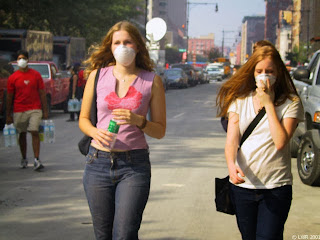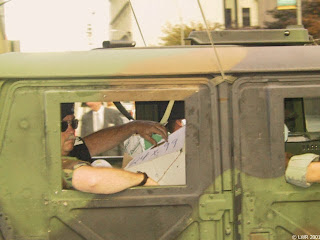Wednesday, September 25, 2013
Balance
The two women make a square. If you were to imagine a lines around them. It makes a geometric shape.
Rule Of Thirds
The two subjects are both perfectly on the line of thirds, if was one drawn on. Both are moving into the picture, not out of it.
Simplicity
This picture is simplistic because the attention is immediately drawn towards the subject, which is the man. There is no complicated background.
Monday, September 23, 2013
National Geographic Warm-up
Post Shoot Reflection
http://lupitasphotojblog.blogspot.com/
This person's photos are very dynamic and it looks like she's on par with the subjects of each topic.
But the photo's seem to lack any moving themes. Also, there seems to bee a lack of knowledge from the blogger. These two things are what need to be improved upon.
This person's photos are very dynamic and it looks like she's on par with the subjects of each topic.
But the photo's seem to lack any moving themes. Also, there seems to bee a lack of knowledge from the blogger. These two things are what need to be improved upon.
40 Greatest Photo's Ever
Thursday, September 19, 2013
Great Black And White Photographers Part Deux
Manuel Alvarez Bravo, was born February 4, 1902, and died October 19, 2002. Bravo attended elementary at the Patricio Saenz, he later dropped out of elementary to work as a clerk and later at the mexican treasury department. Later on he took art classes at the Academy Of San Carlos. Some of his more famous pieces include, "The Good Reputation Sleeping," & "Striking Worker, Assassinated" & "The Daydream"
Quick Blog: My Monster Meal
If i had my own meal it would be a thundercloud with cream cheese, guacamole, provolone, bacon and sausages. And it would cure diseases and save babies.
Tuesday, September 17, 2013
Wednesday, September 11, 2013
Camera Parts
1. In optics, an aperture is a hole or an opening through which light travels.
2. A device that opens and closes to expose the film in a camera is called a shutter.
3. the action of exposing a photographic film to light or other radiation is called exposure.
4. the distance between the nearest and the furthest objects that give an image judged to be in focus in a camera is the depth of field.
5. F-Stop is a camera setting corresponding to a particular f-number.
6. The distance between the center of a lens or curved mirror and its focus is the focal length.
2. A device that opens and closes to expose the film in a camera is called a shutter.
3. the action of exposing a photographic film to light or other radiation is called exposure.
4. the distance between the nearest and the furthest objects that give an image judged to be in focus in a camera is the depth of field.
5. F-Stop is a camera setting corresponding to a particular f-number.
6. The distance between the center of a lens or curved mirror and its focus is the focal length.
Camera History
1. Camera obscura is an optical device that projects an image of its surroundings on a screen. It is used in drawing and for entertainment, and was one of the inventions that led to photography and the camera.
The device consists of a box or room with a hole in one side. Light
from an external scene passes through the hole and strikes a surface
inside, where it is reproduced, rotated 180 degrees (thus upside-down),
but with color and perspective preserved.
2. In the 17th century, the modern camera came one step closer when Isaac Newton and Christian Huygens perfected the understanding of optics and the process of making high quality glass lenses.
3. In 1827 Joseph Nicéphore Niépce added the final touch. He added *film* to create the first successful photograph, and the modern camera was born: A glass lens, a dark box, and film.
4. Even the latest digital cameras work the same way as their ancestors:
Light passes through the lens, into the camera, and exposes the film. And guess what? The end result is still a photograph.
5. Replacing old-fashioned plastic film, digital cameras capture the images with an electronic sensor called a CCD. Photographs are stored on reusable computer memory devices.
6. Auto The camera will completely control flash and exposure. On most cameras this is labelled "auto", on others simply "A". Program: Automatic-assist, just point and shoot. Unlike full auto mode, you can usually control flash and a few other camera settings.
7. Portrait- To attempt to blur out the background, camera will try to use the fastest available lens setting (aperture).
8. Sports- To freeze motion, camera will use the highest shutter speed possible.
9. The "half-pressed" button should be used because:
11. Auto-Flash
In most camera modes, Auto-flash is enabled by default and will automatically fire if the camera thinks it needs more light.
12. Too much light and the picture will be washed out.
13. Not enough light and the picture will be too dark.
14. The term "stop" is used in every aspect of photography to represent a relative change in the brightness of light.
15. 1
16. 2
17. Longer shutter speeds = more light
18. shorter shutter speeds = less light
19. The aperture determines how collimated the admitted rays are.
2. In the 17th century, the modern camera came one step closer when Isaac Newton and Christian Huygens perfected the understanding of optics and the process of making high quality glass lenses.
3. In 1827 Joseph Nicéphore Niépce added the final touch. He added *film* to create the first successful photograph, and the modern camera was born: A glass lens, a dark box, and film.
4. Even the latest digital cameras work the same way as their ancestors:
Light passes through the lens, into the camera, and exposes the film. And guess what? The end result is still a photograph.
5. Replacing old-fashioned plastic film, digital cameras capture the images with an electronic sensor called a CCD. Photographs are stored on reusable computer memory devices.
6. Auto The camera will completely control flash and exposure. On most cameras this is labelled "auto", on others simply "A". Program: Automatic-assist, just point and shoot. Unlike full auto mode, you can usually control flash and a few other camera settings.
7. Portrait- To attempt to blur out the background, camera will try to use the fastest available lens setting (aperture).
8. Sports- To freeze motion, camera will use the highest shutter speed possible.
9. The "half-pressed" button should be used because:
- faster camera response time
- more control over focus
- encourages better composition
11. Auto-Flash
In most camera modes, Auto-flash is enabled by default and will automatically fire if the camera thinks it needs more light.
12. Too much light and the picture will be washed out.
13. Not enough light and the picture will be too dark.
14. The term "stop" is used in every aspect of photography to represent a relative change in the brightness of light.
15. 1
16. 2
17. Longer shutter speeds = more light
18. shorter shutter speeds = less light
19. The aperture determines how collimated the admitted rays are.
20. You can adjust the aperture to Smaller F-stops numbers which will increase the amount of light.
Monday, September 9, 2013
Thursday, September 5, 2013
First Photo's
I liked this picture of ms.Derickson because she looks like a nice and cool thug. I told her to put on her "fierce and cool" face. Her chin is out, and she is straight angled, thus making it a good photo in my opinion.I dislike this picture because she looks less fierce and more awkward. I told Paige to tilt her head at an awkward angle to create the illusion that she is disproportionate. In conclusion, an awkward angle and weird facial expression created this bad photo.
Subscribe to:
Posts (Atom)













